Affiliate Disclaimer
Some links in this article are affiliate links. We may earn a small commission if you make a purchase through these links, at no extra cost to you. We only recommend products we find useful to our readersDiabetes, particularly type 2 Diabetes, has become a growing global health concern, affecting millions of individuals worldwide. While genetics and lifestyle factors like physical activity play significant roles in its development, diet is a key contributor that can either increase or lower your risk.
Daily foods directly influence our blood sugar levels and insulin sensitivity. Understanding how diet impacts diabetes risk is crucial for prevention and long-term health management.
This article will explore the dietary factors that can raise or reduce the likelihood of developing diabetes and highlight what to watch for in everyday meals.
Refined Carbohydrates and Sugars
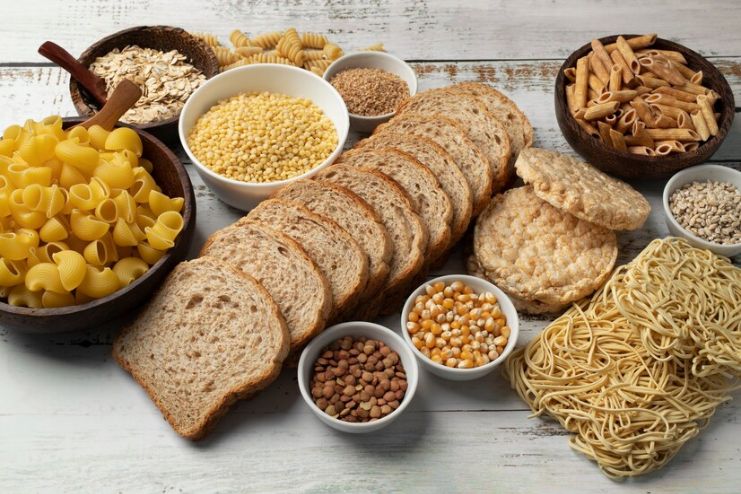
Refined carbohydrates and sugars are major contributors to rapid increases in blood sugar levels. These foods undergo significant processing, stripping away essential nutrients like fiber, vitamins, and minerals, leaving behind easily digestible sugars and starches.
This leads to quick digestion and absorption, causing blood sugar to spike shortly after consumption.
The Impact of Refined Carbs
Refined carbohydrates, such as white bread, pastries, white rice, and many processed snacks, lack the fiber and nutrients in whole grains. The absence of fiber means the body breaks down these carbs faster, rapidly releasing glucose into the bloodstream.
This quick surge in blood sugar triggers a high insulin response, which, over time, can increase the risk of insulin resistance.
- Processed Grains: Foods like white bread, pasta made from refined flour, and crackers are processed grains that lead to rapid glucose absorption. These foods have a high glycemic index, causing quick spikes in blood sugar.
- Sugary Beverages and Snacks: Sodas, candy, and baked goods made with added sugars are familiar sources of refined carbohydrates. These products raise blood sugar quickly and offer little nutritional value, contributing to poor blood sugar management and weight gain.
Hidden Sugars
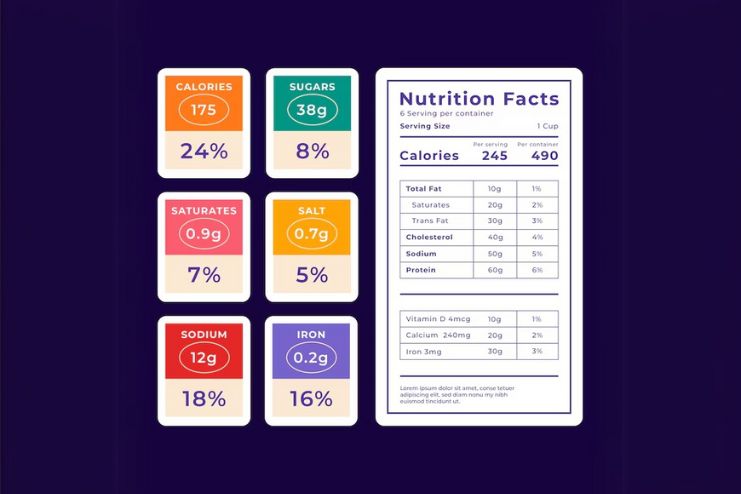
Many packaged foods contain hidden sugars, even those that aren’t necessarily considered sweets. Items like ketchup, salad dressings, and sauces often have added sugars contributing to blood sugar spikes. These hidden sugars can make it challenging to maintain stable glucose levels, as they are consumed unknowingly.
- Reading Labels: It’s crucial to check food labels for added sugars, which may appear under names like high-fructose corn syrup, sucrose, dextrose, and maltose. Reducing the consumption of products with hidden sugars can help keep blood sugar levels in check.
Effects on Long-Term Health
Frequent consumption of refined carbohydrates and sugars impacts blood sugar in the short term and contributes to long-term health issues. Consistently high blood sugar levels can lead to insulin resistance, increased fat storage, and eventually Type 2 diabetes.
- Insulin Resistance: Over time, the pancreas has to work harder to produce insulin to regulate blood sugar, leading to insulin resistance, a precursor to Type 2 diabetes.
- Risk of Obesity: Refined carbs and sugars are often high in calories but low in nutrients, leading to weight gain. Excess weight, especially around the abdomen, increases the risk of developing insulin resistance and metabolic disorders.
Healthier Alternatives
Replacing refined carbohydrates and sugars with healthier options can significantly improve blood sugar management and reduce diabetes risk.
- Whole Grains like brown rice, quinoa, and whole-wheat bread
- Natural Sweeteners like honey, maple syrup, or stevia
Fiber for Diabetes Prevention
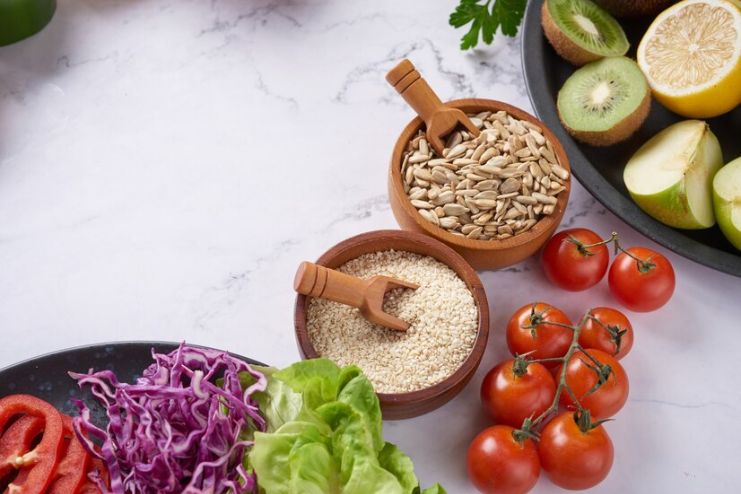
Fiber plays a significant role in maintaining healthy blood sugar levels and reducing the risk of developing type 2 diabetes. It is a carbohydrate that the body cannot digest, which means it does not contribute to rapid spikes in blood glucose.
There are two types of dietary fiber—soluble and insoluble—each offering unique benefits for diabetes prevention and overall health.
Types of Fiber and Their Functions
-
Soluble Fiber
Soluble fiber dissolves in water, forming a gel-like substance that slows digestion. This process helps to moderate blood sugar levels by reducing the rate at which sugar is absorbed into the bloodstream.
Oats, legumes, fruits (such as apples and citrus fruits), and vegetables are among foods high in soluble fiber.
-
Insoluble Fiber
Insoluble fiber does not dissolve in water and adds bulk to the stool, promoting regular bowel movements. While it doesn’t directly affect blood sugar levels as soluble fiber does, it aids in overall digestive health, which is crucial for metabolism and weight management.
Sources include whole grains, nuts, and vegetables like carrots and cauliflower.
- Lowers Glycemic Index of Foods: Many high-fiber foods, especially those rich in soluble fiber, have a low glycemic index (GI), meaning they cause slower, more gradual increases in blood sugar compared to refined carbs.
- Reduces Insulin Resistance: Over time, stable blood sugar levels help the body remain sensitive to insulin, lowering the risk of developing insulin resistance, a leading cause of Type 2 diabetes.
How to Incorporate More Fiber into Your Diet
Increasing daily fiber intake is one of the simplest and most effective ways to prevent diabetes and maintain stable blood sugar levels. Here are a few strategies to increase fiber consumption:
- Eat More Whole Grains
- Add Legumes to Meals
- Increase Fruit and Vegetable Intake
- Snack on Nuts and Seeds
Daily Fiber Recommendations
According to health guidelines, adults should aim for at least 25-30 grams of fiber per day from various sources.
Healthy Fats vs. Unhealthy Fats
Fats are essential to the diet, but not all fats are created equal. While some fats can support overall health and help manage diabetes risk, others can contribute to the development of type 2 diabetes and other chronic conditions.
Understanding the difference between healthy and unhealthy fats is crucial for making better dietary choices that promote long-term health.
1. Healthy Fats
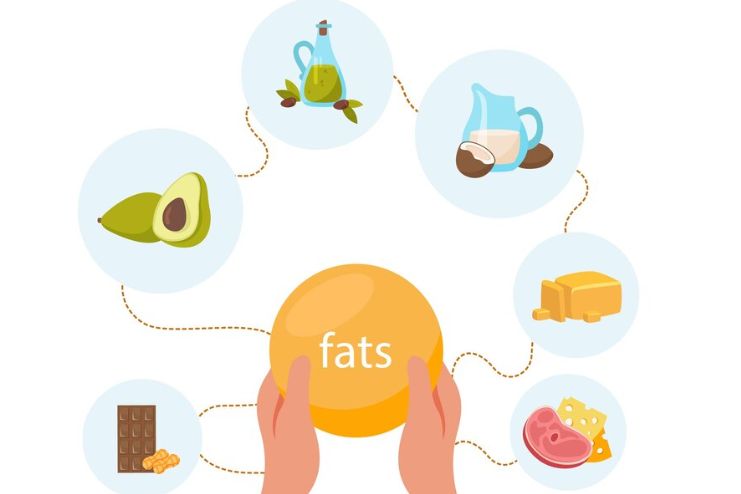
Monounsaturated Fats: These fats are considered heart-healthy and can improve insulin sensitivity. They are known to reduce inflammation, lower LDL (“bad”) cholesterol levels, and promote a stable blood sugar profile.
Monounsaturated fats can be found in:
- Olive Oil
- Avocados
- Nuts and Seeds
Polyunsaturated Fats: These include omega-3 and omega-6 fatty acids, which are vital for brain function, reducing inflammation, and improving heart health. Omega-3s, in particular, are beneficial for people with diabetes because they may reduce the risk of developing heart disease, a common complication of diabetes.
Sources of polyunsaturated fats include:
- Fatty Fish
- Walnuts and Chia Seeds
- Sunflower and Soybean Oils
2. Unhealthy Fats

Trans Fats: Trans fats are artificially created through hydrogenation, which turns liquid oils into solid fats. These fats are found in many processed and fried foods and are the most harmful type of fat, significantly increasing the risk of type 2 diabetes, heart disease, and inflammation.
Foods high in trans fats include:
- Fried Foods
- Processed Snacks
- Margarine and Shortening
Saturated Fats: While not as harmful as trans fats, saturated fats can raise LDL cholesterol levels and are associated with an increased risk of heart disease and insulin resistance. Limiting intake of saturated fats is essential for managing diabetes risk.
Familiar sources of saturated fats include:
- Red Meat
- Full-Fat Dairy Products
- Processed Meats
Health Risks of Unhealthy Fats:
- Promote Insulin Resistance: Diets high in trans and saturated fats are linked to increased insulin resistance, which makes it harder for the body to manage blood sugar levels and increases the risk of Type 2 diabetes.
- Increase Risk of Heart Disease: These fats contribute to plaque buildup in the arteries, raising the risk of cardiovascular disease, a significant concern for people with diabetes.
How to Incorporate More Healthy Fats into Your Diet
- Choose Plant-Based Oils
- Eat More Fatty Fish
- Snack on Nuts and Seeds
- Limit Processed Foods
Balancing Fat Intake for Diabetes Prevention
Striking the right balance between healthy and unhealthy fats can significantly impact your risk of developing diabetes and other health issues. The goal is to reduce your intake of trans and saturated fats while incorporating more monounsaturated and polyunsaturated fats into your diet.
- Check food labels for trans and saturated fats, and avoid products that list “partially hydrogenated oils.”
- Consume in moderation
Glycemic Index (GI) and Glycemic Load (GL)
Understanding how different foods impact blood sugar levels is crucial for managing diabetes and overall health. Two essential concepts in this regard are the Glycemic Index (GI) and Glycemic Load (GL). These measures help assess how foods affect blood sugar and guide dietary choices to maintain stable glucose levels.
1. Glycemic Index (GI)
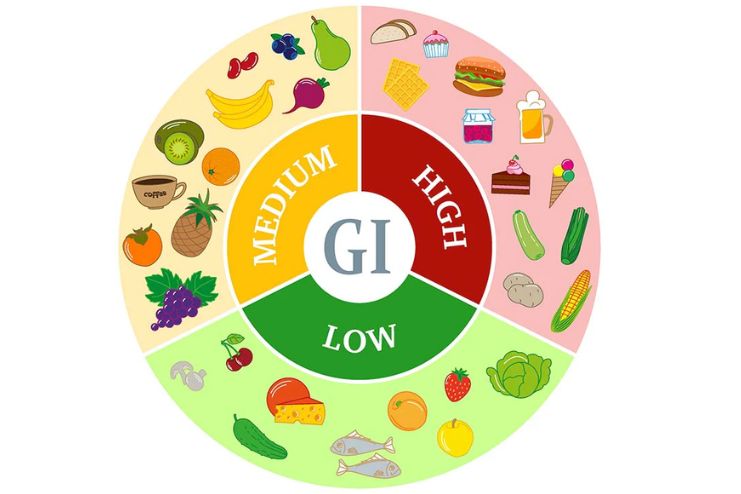
The Glycemic Index (GI) ranks carbohydrates in foods based on their immediate effect on blood glucose levels. Foods are assigned a GI value on a scale from 0 to 100, with pure glucose as the reference point at 100. The GI classifies foods into three categories:
- Low GI Foods (0-55): These foods cause a gradual rise in blood sugar levels. Examples include most fruits, vegetables, legumes, and whole grains.
- Medium GI Foods (56-69): These foods lead to a moderate increase in blood sugar. Examples include whole-grain bread, brown rice, and some sweet potatoes.
- High GI Foods (70 and above): These foods result in a rapid spike in blood sugar. Typical examples are white bread, sugary snacks, and many processed foods.
Glycemic Load (GL)

While GI measures the quality of carbohydrates, Glycemic Load (GL) considers both the quality and the quantity of carbohydrates in a food serving. It provides a more accurate reflection of how a specific portion of food will affect blood sugar levels. The GL is calculated using the formula:
GL= (GI×Carbohydrate content per serving)/100
GL is classified into three categories:
- Low GL (0-10): Foods with a low glycemic load have a minimal impact on blood sugar levels. Examples include most non-starchy vegetables and legumes.
- Medium GL (11-19): These foods moderately impact blood sugar. Examples include whole-grain bread and certain fruits.
- High GL (20 and above): Foods with a high glycemic load can significantly increase blood sugar. Examples include white bread and sugary beverages.
Practical Applications of GI and GL
To effectively incorporate GI and GL into a diabetes-friendly diet, consider the following tips:
- Focus on Low GI/GL Foods
- Portion Control
- Pairing high-GI foods with low-GI options
- Look for GI and GL information on food packaging
Portion Control and Meal Timing

Effective blood sugar management in individuals at risk for diabetes or already diagnosed involves not only choosing the right foods but also understanding portion control and meal timing. These factors can significantly influence blood glucose responses and overall metabolic health.
- Paying attention to hunger cues and eating slowly
- Using measuring cups, food scales, or visual cues (like comparing portion sizes to everyday objects)
- Balanced Plates: Aim for a balanced plate that includes:
- Fill half your plate with a variety of colorful vegetables.
- Include a palm-sized portion of lean protein (e.g., chicken, fish, legumes).
- Limit whole grains and starchy vegetables to a quarter of the plate
Meal Timing and Its Effects
Meal timing can significantly influence insulin sensitivity, hunger, and blood sugar responses. Regular and well-timed meals can help maintain stable energy levels and prevent extreme fluctuations in blood glucose.
- Consistent Meal Schedule: Eating at regular intervals helps the body maintain a stable rhythm. For many, three main meals with healthy snacks in between can prevent excessive hunger and the likelihood of overeating.
- Avoid Skipping Meals: Skipping meals can lead to overeating later in the day and result in spikes in blood sugar. Ensuring that meals are balanced and regular helps maintain steady energy levels.
- Mind the Timing of Carbohydrates: Consuming carbohydrates strategically, such as pairing them with protein and healthy fats, can slow down their absorption and reduce blood sugar spikes. For example, instead of consuming a high-carb breakfast alone, pairing oatmeal with nuts and fruit can provide a more balanced meal.
- Late-Night Eating: Late-night meals can disrupt blood sugar regulation and metabolic processes. Aim to finish eating at least 2-3 hours before bedtime to allow the body to digest food properly and maintain stable blood sugar levels overnight.
Processed Foods and Diabetes Risk
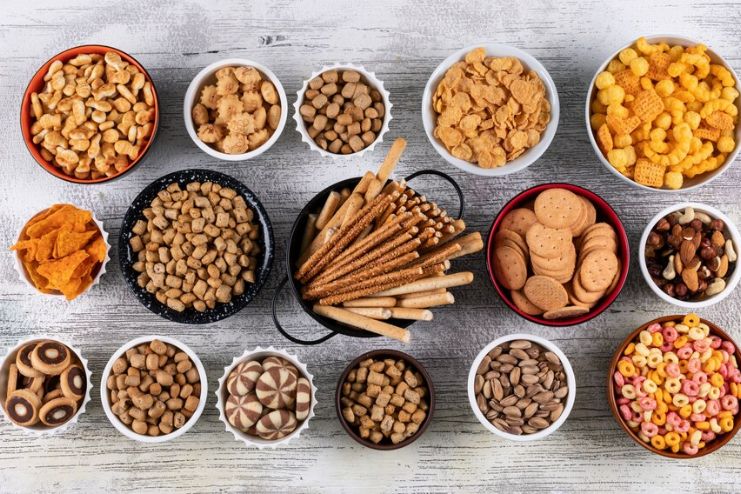
The modern diet is often laden with processed foods, which can significantly impact health and contribute to an increased risk of diabetes. Understanding how processed foods affect blood sugar levels and overall metabolic health is crucial for anyone looking to reduce their risk of diabetes.
What are Processed Foods?
Processed foods refer to items that have been altered from their original form through canning, freezing, refrigeration, dehydration, and fortification. While some processing can enhance food safety and longevity, many processed foods are high in unhealthy ingredients that can adversely affect health.
Common Types of Processed Foods:
- Sugary Beverages
- Snack Foods
- Ready-to-Eat Meals
- Processed Meats
The Impact of Processed Foods on Blood Sugar Levels

Processed foods are often characterized by high glycemic indices (GI), which can cause rapid blood sugar spikes. This effect is particularly concerning for those at risk for diabetes or with existing blood sugar regulation issues.
- High-Added Sugars: Many processed foods are loaded with added sugars, increasing insulin resistance over time. Frequent consumption can contribute to weight gain and obesity, both significant risk factors for type 2 diabetes.
- Low Fiber Content: Processed foods typically lack fiber, vital in slowing glucose absorption. A diet low in fiber can lead to quick spikes in blood sugar levels, making it harder to maintain stable energy throughout the day.
- Refined Carbohydrates: Many processed foods contain refined carbohydrates, which are quickly digested and can lead to rapid increases in blood sugar. For instance, white bread and pastries can have a higher glycemic response than whole-grain alternatives.
The Role of Ingredients in Processed Foods
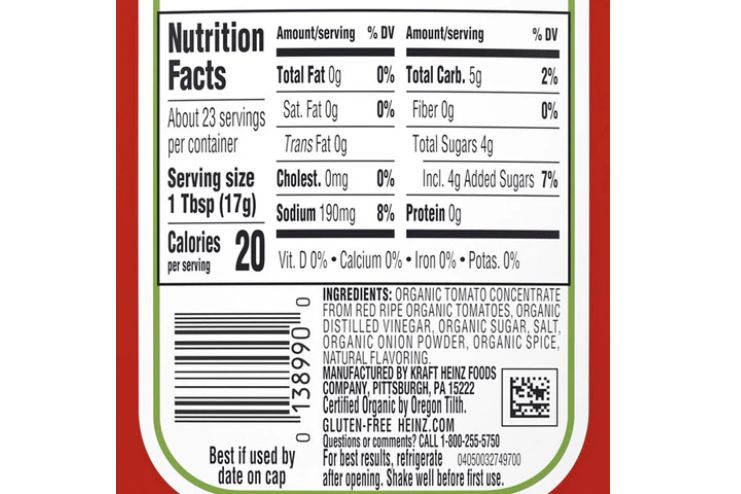
Understanding the ingredients in processed foods can help individuals make better choices. Many processed foods contain:
- Trans Fats and Saturated Fats: These unhealthy fats can promote inflammation and insulin resistance, increasing diabetes risk.
- Excess Sodium: High sodium content can lead to hypertension, another risk factor for diabetes. Processed foods often contain salt as a preservative, which can also lead to water retention and increased blood pressure.
- Preservatives and Additives: Many processed foods contain artificial additives that can affect gut health and overall metabolic function, potentially increasing the risk of insulin resistance.
Strategies to Reduce Processed Food Intake
Reducing processed food consumption can significantly lower diabetes risk. Here are some practical strategies:
- Read Labels
- Choose Whole Foods
- Prepare Meals at Home
- Limit Sugary Beverages
Conclusion
Understanding the connection between diet and diabetes risk is crucial for preventing this chronic condition. Individuals can significantly impact their blood sugar levels and overall health by making informed dietary choices.
Emphasizing whole grains, non-starchy vegetables, healthy fats, legumes, fruits, dairy alternatives, and beneficial spices can help create a balanced diet that promotes blood sugar stability and reduces the risk of diabetes.
Incorporating these beneficial foods while avoiding refined carbohydrates, sugars, and processed foods can promote better metabolic health. Adopting portion control and mindful eating practices further enhances the effectiveness of dietary interventions.
Ultimately, maintaining a healthy lifestyle that includes regular physical activity, stress management, and adequate sleep, alongside these dietary strategies, can empower individuals to take charge of their health and lower their risk of diabetes.
Everyone can contribute to their long-term well-being and a healthier future by prioritizing nutrition.
References
- https://www.tandfonline.com/doi/full/10.1080/10408398.2013.792772
- https://diabetes.org/food-nutrition/understanding-carbs
- https://www.cdc.gov/diabetes/healthy-eating/fiber-helps-diabetes.html
- https://www.pollie.co/blog/importance-of-fat-protein-and-fiber-for-blood-sugar-regulation
- https://www.bezzyt2d.com/discover/diet-and-nutrition-t2d/health-meal-timing-why-when-you-eat-matters-for-type-2-diabetes-management
- https://www.ncbi.nlm.nih.gov/pmc/articles/PMC10903815
- https://www.medicalnewstoday.com/articles/can-dehydration-cause-high-blood-sugar
In this Article




















